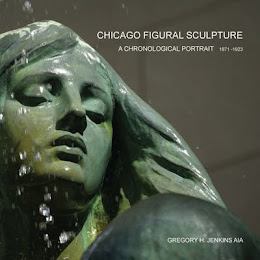 Karl Bitter
was a part of what Augustus Saint Gaudens called "the greatest meeting of
artists since the Renaissance."
Bitter was a sculptor at the Worlds Columbian Exposition. Turn of the Century hyperbola is
infamous.Still, Saint Gaudens is
recognized, even now, as a significant talent whose opinion is to be respected.
And somehow, the 1893 World's Fair in Chicago
still captures our imaginations today.
Karl Bitter
was a part of what Augustus Saint Gaudens called "the greatest meeting of
artists since the Renaissance."
Bitter was a sculptor at the Worlds Columbian Exposition. Turn of the Century hyperbola is
infamous.Still, Saint Gaudens is
recognized, even now, as a significant talent whose opinion is to be respected.
And somehow, the 1893 World's Fair in Chicago
still captures our imaginations today.
None of
Bitter's art survives in Chicago.
But it was his work here that sealed his reputation and a lifetime of
succcessful commissions. Bitter was a major contributor to the Dewey Arch in Manhattan's Madison Square. He worked with Richard Morris Hunt on the East Doors at Trinity Church and at the Biltmore Estate in Asheville: with Cass Gilbert at the US Customs House in New York; and with George Post at the Cleveland Trust and the Wisconsin State Capital.
After the Chicago
Fair, Bitter went on to the Louisiana Purchase Exposition in Saint
Louis and the Pan Pacific in San
Francisco. He was killed, at the height of his career, in a traffic accident in New York. His final
commission, the Depew Memorial Fountain, which was completed by Alexander
Stirling Calder.
 |
| DEPEW FOUNTAIN. INDIANAPOLIS |
Most of
Bitter's work is lost. The Arch. His
work at the Fairs. Still there are important glimpses of his art. And some small confirmation that Saint Gaudens
assessment of the talent that surrounded him -- in Jackson Park, in the summer
of 1892 -- wasn't so far off the mark.























































































